 The Jesus Pie model is meant as an aid in exploring the “Jesus Myth”. Above is how I cut my Jesus Pie; it is how I understand the Bible’s reports about Jesus.
The Jesus Pie model is meant as an aid in exploring the “Jesus Myth”. Above is how I cut my Jesus Pie; it is how I understand the Bible’s reports about Jesus.
Free Offer: If anyone would like their own personalized Jesus Pie, send me your percentages. Just like my “Share your Beliefs” table, this diagram could be useful for believers and unbelievers alike.
The Model’s Caveats: Though I think this Jesus Pie model is a useful, it has two important caveats. After you read the caveats, please consider the challenge below to remedy them.
(1) The Bible is not homogenous: If I were to make a diagram like this for every book in the Christian New Testament, the percentages would vary widely. Thus, speaking about “The Bible” as if it is a homogenous work (as my diagram does) is a mistake. So for a more accurate exploration, we should discuss the NT book by book. (see my posts here, here and here):
(2) The Illusion of Quantitativeness: The diagram implies that I have actually categorized Bible verses and tallied them up. But I have done no such thing. I actually don’t have a clue how I’d give numbers to these categories. BUT, I am being honest — this is the image in my head today. I think many of us have brains that form these sort of quantitative impressions without using real numbers. So I am just exposing my intuitions. Exposing your intuitions can be important in exploring any idea.
The Challenge:
Thomas Jefferson cut up his Bible and the Jesus Seminar did their famous 4-colors classification to judge Jesus’ words. Would anyone like to experiment with me and choose one Gospel to explore in terms of my four categories. We will see how difficult it is to apply the categories and perhaps change our Jesus Pies. By posting your intuitive Jesus Pie now and then rethinking after some exploration, you could then post a second Jesus Pie to illustrate your changes.


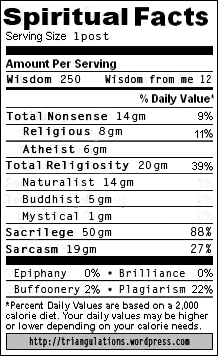



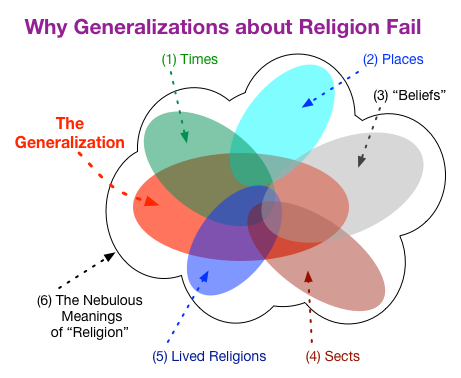


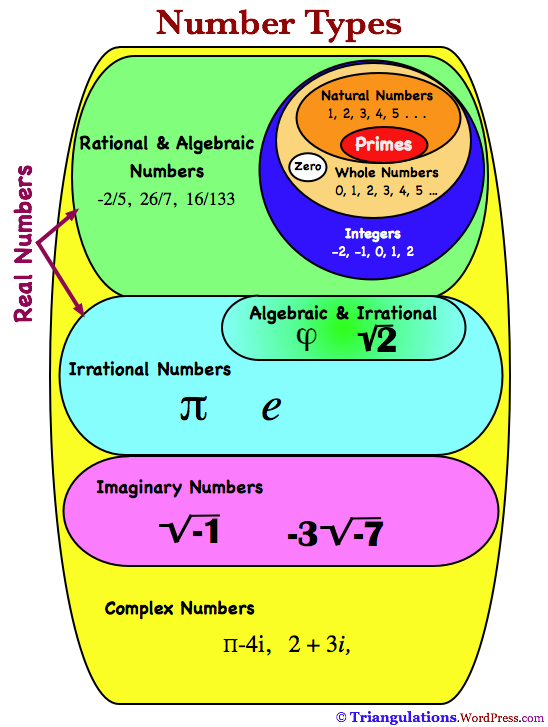


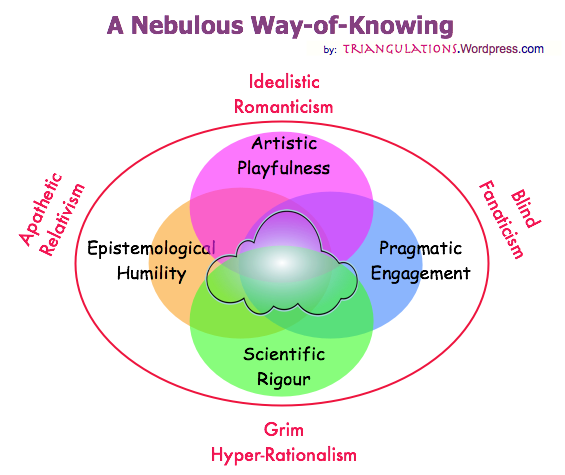






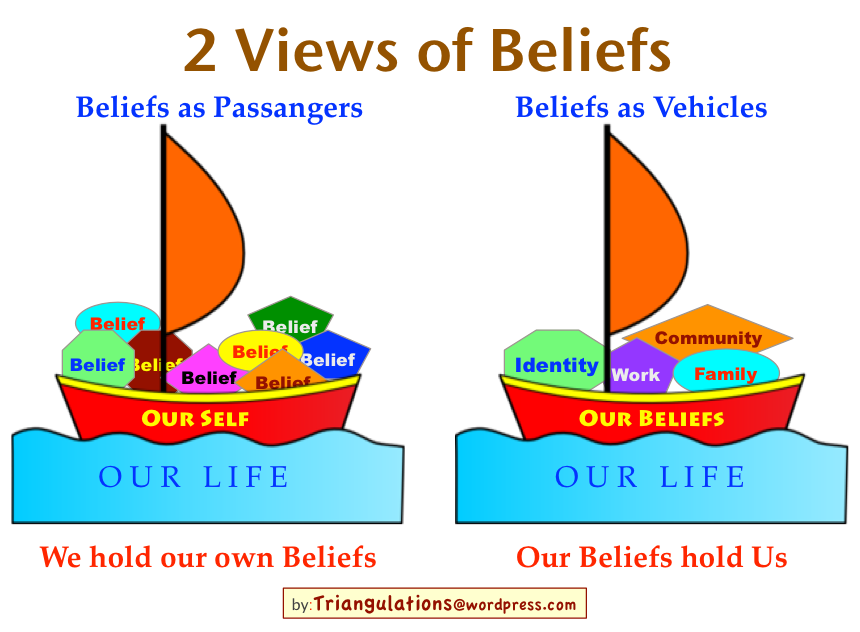







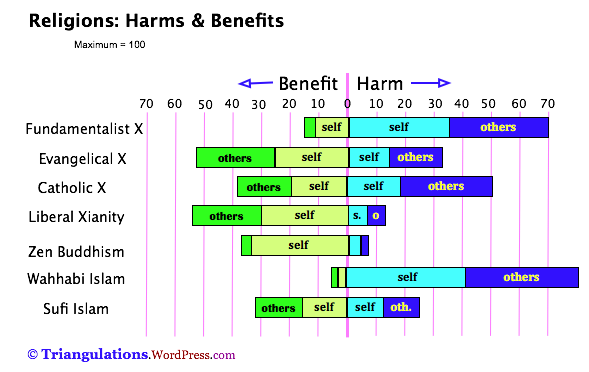



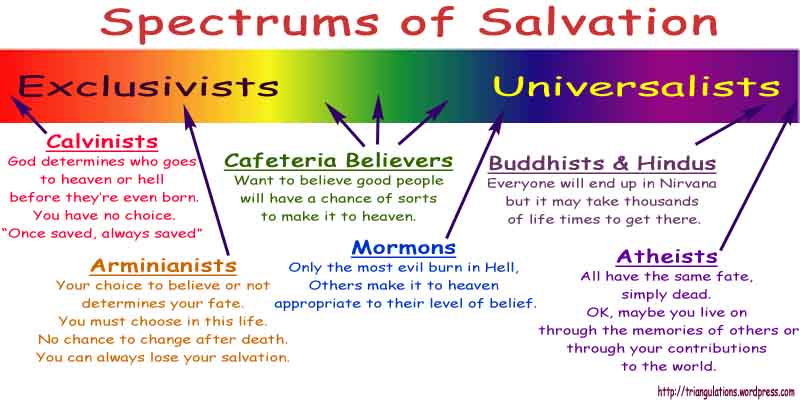




Hmmm, I would guess 33% fabricated, 52% fictional, 10% close enough, and 5% actual, based on your descriptions.
If this had been restricted to John, though, the fabricated number would be nigh 80%!
I’m in the process of reading Mark now for my next summary, and I’ve got Luke and John coming next. I’ll at least take the challenge for the rest of Mark, chapters 8-16, and maybe flesh that out to its beginning chapters as well if it isn’t too much of a burden based on work/life commitments at the time. 🙂 And if it proves to be easy, and/or fun, I’ll carry on through with Luke and John too.
So, TWF, would you like me to send you your own personalized Jesus Pie to put on your blog?
Sure, that will be fun. It will be great to check back after I finish the analysis to see just how wrong I was. 🙂
@ The Wise Fool,
Cool, your Jesus Pie should be in your mail box!
This should be fun. I hope we get a few other people interested.
I will do Mark with you. I probably won’t finish it until the end of the summer. We will e-mail to discuss methodology as we go. Thanx for playing along.
Jesus Pie — there’s a new take on Sweeney Todd.
Interesting idea. I feel we westerners get hung up on reading the Bible while trying to winnow which bits are really, truly real–rather than focusing on the *point* of the narratives. As John Dominic Crossan says, often and eloquently, “It’s a parable, dummy–this doesn’t make it a lie!”
@ bjanecarp,
Dude! You got me lookin’ stuff up. I didn’t know who “Todd Sweeney” (wiki) was, yet alone what he had to do with pies. That is hilarious. I went to netflix and found the 1936 film and have added it to my queu — I wish they had the 1928 silent version. Then I saw that Johnny Depp had done his version, “Sweeney Todd”, and remembered seeing it a few years ago — I loved that bizarre movie — and Depp (as usual) was great). The historicity of this dude is a fun debate — great analogy! I wonder how this film/play affected society since it was so popular back then. I look forward to the trip — thanks.
@ bjanecarp:
Now on a serious note:
Concerning “Westerners getting hung up reading the Bible…”
The religious specialists (priest, pastors and popes), tell us it is true enough that we should change our minds and join, convert others, repent of some sin, pay tithes or some other action. Thus, we people need to figure out if they agree. If it ain’t “true enough” or outright wrong, then we can tell them off.
If a parable tells you that you should slaughter tribes not following your god, then you should ignore it. When we are told to do or believe something, we need to decide if it is true. Saying, “Ah don’t worry, it is a parable, so now you can follow it.” is another hoodwink. Jesus said to leave families, Luke tells us to give 10% or the holy spirit will kill you. Parables, or bullshit? The difference is not trivial, I think. But perhaps that is not what you meant.
Very interesting.
I read somewhere, can’t remember where, offhand, that the gospels were merely a collection of Jesus’s sayings passed along through oral tradition that were then redacted to present an orderly narrative. This can be shown because of so many much-used ‘joining phrases/words’ – such as ‘straightaway’ which suggests action but excludes any particular time frame.
And it is always worth considering why the Letters (the real ones) of Paul were written before the gospels.
It then leads one to consider the famous (supposed) Q source.
Bottom line? Reckon the character of Jesus of Nazareth, as portrayed on the bible, is about as real Luke Skywalker.
I mean, you never know, right?
May the force be with you.